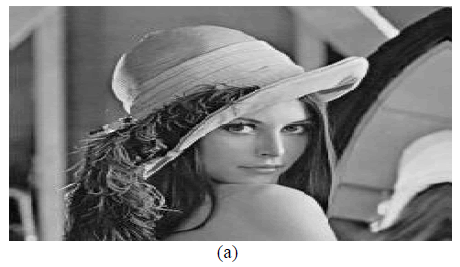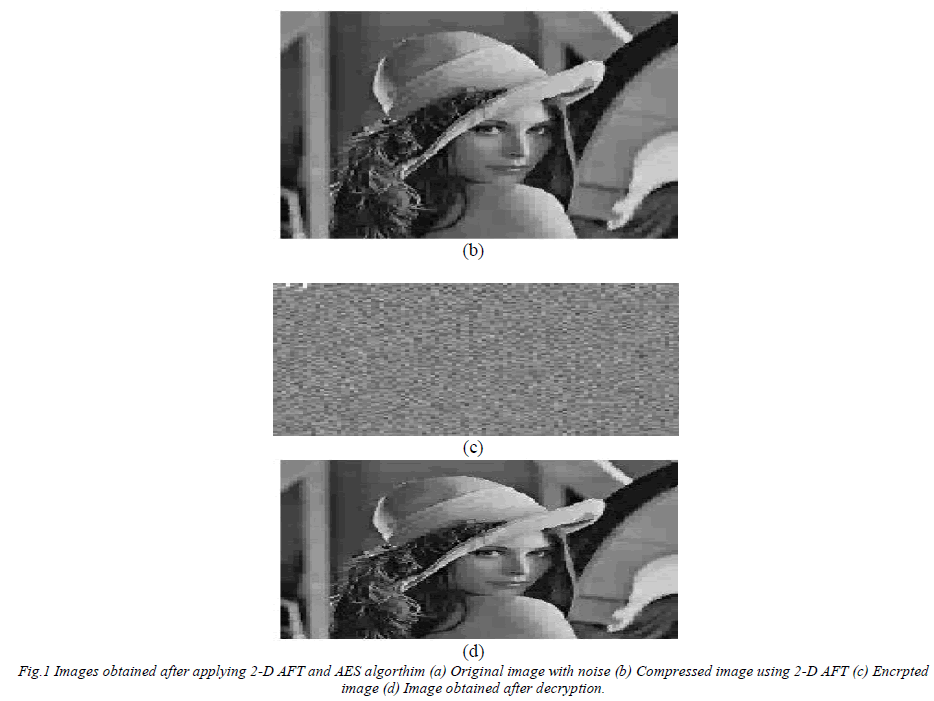ISSN ONLINE(2319-8753)PRINT(2347-6710)
ISSN ONLINE(2319-8753)PRINT(2347-6710)
| Rajesh Kumar. S1, Prasath Kumar. S2, Usha. P3 Assistant Professor, Department of Electrical and Electronics Engineering, Magna College of Engineering, Chennai, India |
| Related article at Pubmed, Scholar Google |
Visit for more related articles at International Journal of Innovative Research in Science, Engineering and Technology
The majority of digital image processing featuring JPEG image compression uses on-chip image processing circuits for JPEG computations. For these computations, the JPEG algorithm employs the traditional method of computing the discrete cosine transform(DCT).These methods operate with multiplications, which leads to a moderate level of computational complexity. In proposed, we describe an entirely new approach that uses a novel signal processing algorithm namely arithmetic Fourier transform(AFT) for computing the DCT. This new method requires only additions which makes the computation much more efficient and low power. Before compression of image, the image is freed from salt and pepper noise,with the help of median filter.This further describes an encryption technique using Advance Encryption Standard (AES). The security offered by AES algorithm is unbreakable. This resists all the known types of attacks. The architecture and circuits may be implemented in a conventional CMOS process.
Keywords |
| Advance encryption standard(AES),image compression, arithmetic Fourier transform, JPEG image compression. |
INTRODUCTION |
| Recently, the image compression is performed by a separate digital signal processing circuit employing the DCT algorithms in the digital domain. The development of a new generation of image sensors that efficiently integrates the compression with the sensor itself will find widespread use in imaging applications where compression is needed and power consumption must be limited. The Arithmetic Fourier Transform (AFT) is computationally more efficient than currently used DCT computation methods. This new method requires only additions which makes the computation much more efficient and low power. For example, if a is the number of bits in the addends, a multiply operation requires an equivalent (ïÿýïÿý−1)2number of adder circuits. The key element in the method that we are using in this implementation is the two-dimensional arithmetic Fourier transform (2-D AFT) algorithm.With some pre-scaling of the data, the AFT computes the DCT coefficients solely by performing additions.Unlike the conventional DCT algorithm, the AFT-based algorithm requires no multiplications. Further, there is a need of secure communication. |
| Hence encryption of data image is done based upon AES algorithm. Encryption is the the process of encoding messages (or information) in such a way that third parties cannot read it, but only authorized parties can Encryption doesn't prevent hacking but it prevents the hacker from reading the data that is encrypted. The AES is one of the most secure, robust, and reliable algorithms. AES encrypts 128-bit blocks of data, using multiple substitution and permutation operations. |
| In proposed, we first convert the analog image obtained from CMOS sensor into digital image and this image is compressed using AFT and further encryption of image is done using AES and finally it is decrypted as original image. The image considered here is JPEG image. This AFT algorithm provides a reduced computational complexity since only additions are taken. Given its relative mathematical simplicity, the AFT algorithm is well suited for efficient VLSI implementation. |
II. PROCEDURE FOR IMAGE COMPRESSION AND ENCRYPTION |
| AFT algorithm is used for image compression,where the computational time is reduced since only addition operation is performed and multiplication is eliminated.AES provides encryption which gives an unbreakable security. The following diagram shows the general procedure of how image compression and encryption are done. |
| A.CMOS image sensor |
| A CMOS image sensor is an image sensor consisting of an integrated circuit containing an array of pixel sensors, each pixel containing a photodetector and an active amplifier. There are many types of sensors used most commonly in cell phone cameras, web cameras, most digital pocket cameras. |
| B. Pixel correction |
| A pixel that responds differently from its neighbors can be distracting and is often unacceptable. This correction adjusts the signal response of every pixel in the image. |
| C. Image compression |
| Compression is useful because it helps reduce resources usage, such as data storage space or transmission capacity. Because compressed data must be decompressed to use, this extra processing imposes computational or other costs through decompression |
| D.Image encryption |
| Encryption is the process of encoding messages (or information) in such a way that third parties cannot read it, but only authorized parties can. Image encryption encypts a text into an image, by appling an offset to each single byte. The following example shows how an image is obtained after applying 2-D AFT algorithm. |
 |
 |
III. CONCLUSION |
| The work here has addressed the data compression by demonstrating a unique way of capturing images. Compression is an essential step in the image capture and processing chain, especially in power and bandwidth constrained remote viewing applications. The 2-D AFT methodology is feasible for image capture and can be implemented in silicon. Then further the compressed image is encrypted using Advance Encryption Standard (AES). To encrypt data before transmission, this sequence was combined with the plaintext using XOR operation. Therefore, this scheme is secure and has a high encryption speed. |
References |
|